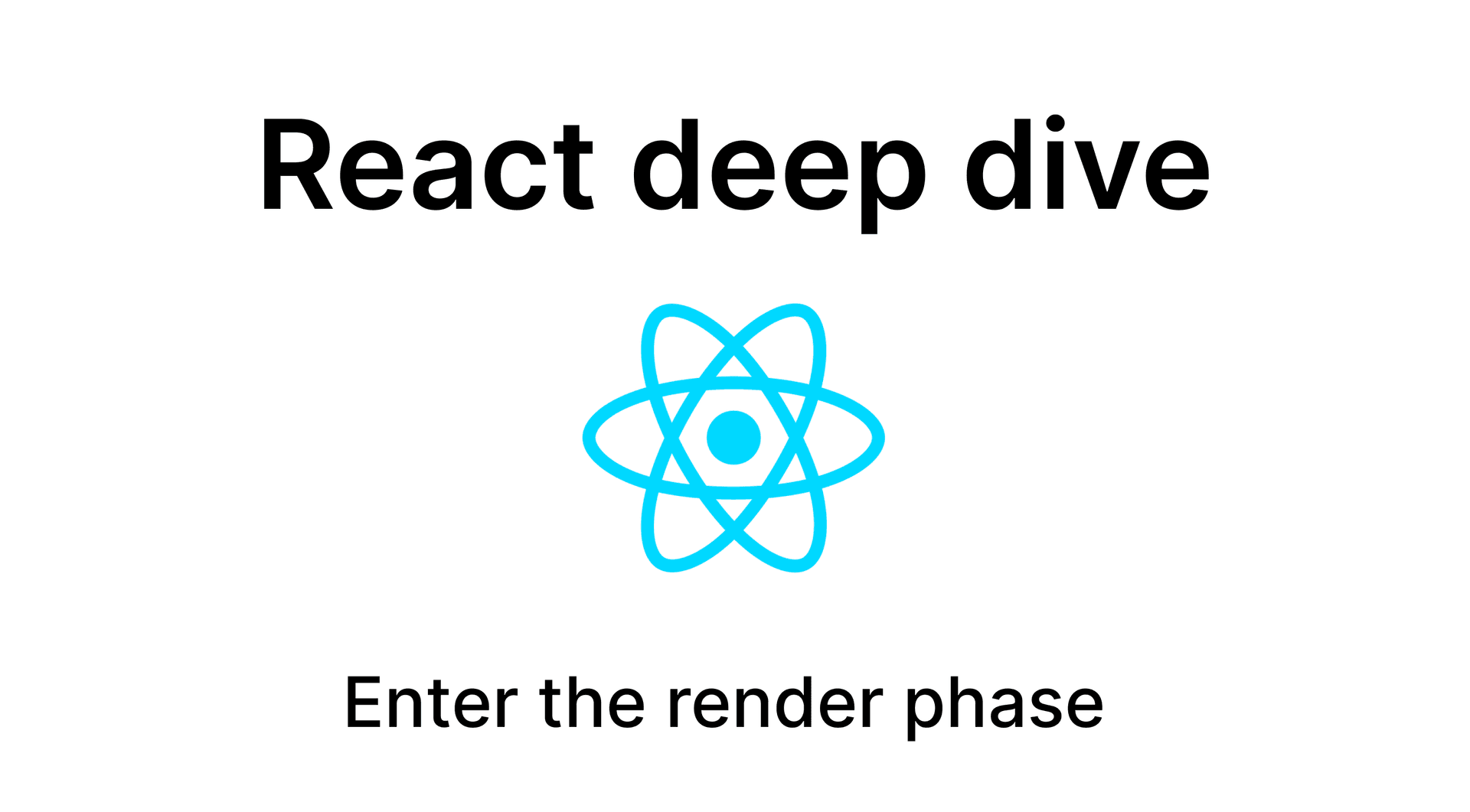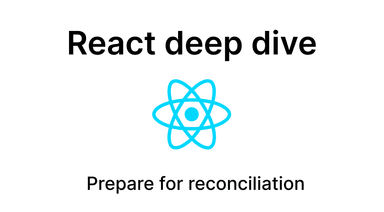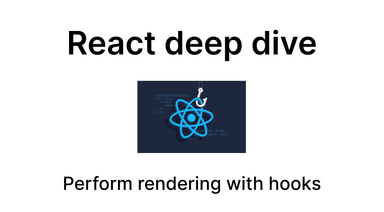
2024-09-20
React / Deep-dive (16)
Enter the render phase
이번 글에서도 분석의 바탕이 되는 코드는 React 16.12.0 version을 기준으로 하며, 해당 블로그에 감사 인사를 전합니다. 지난 글에서는 재조정을 위해 준비하는 과정을 살펴봤습니다.
이번 시간에는 render phase에 진입해 React가 reconcile하는 과정을 살펴보겠습니다.
그 시작점은 workLoopSync()함수 입니다.
ConcurrentMode에서는 workLoopConcurrent()함수가 실행 되지만 지난 시간까지 React에서의 ConcurrentMode가 어떻게 실행되는지는 충분히 살펴보았으므로 앞으로는 Sync기준으로 흐름을 이어 가보도록 하겠습니다.
아래 링크는 React의 렌더링 흐름에 따라 저 나름대로의 그림을 그려보았으며, 이 흐름에 따라 글이 이어 질 것입니다. (무단 복사 및 배포는 하지 말아주세요)
Flow
Reconciler → Scheduler → Scheduler Host-config → Reconciler Render Phase → Reconciler Commit Phase
1. Reconciler
-
Dispatch a trigger to update.
-
The reconciler requests the scheduler to schedule a task.
2. Scheduler
- Schedule the work.
3. Scheduler Host Config
- Yield control to the host.
4. Reconciler Render Phase
-
Prepare for reconciliation.
-
Enter the render phase.
-
Perform rendering with hooks.
-
ReconcileChildren
-
Finishing Work
5. Reconciler Commit Phase
- Execute
useEffectanduseLayoutEffect.
6. Browser Paint
Before
-
prepareFreshStack()을 통해 준비가 끝난 workInProgress()의 상태는 다음과 같았습니다.
-
흐름은 다음과 같습니다.
workLoopSync()
- 동기적으로 작업을 처리하는 루프입니다. 모든 작업이 완료될 때까지 반복적으로 실행됩니다.
performUnitOfWork()
- HostRoot부터 시작해
beginWork()와completeUnitOfWork()를 통해 자식 및 형제 노드로 이동하며 업데이트를 진행합니다.
beginWork()
- 현재 작업 중인 Fiber 노드의 자식 노드를 처리합니다. 만약 해당 서브트리에서 업데이트가 발생하지 않았다면
null을 반환해 더 이상 작업하지 않고 멈춥니다.
bailoutOnAlreadyFinishedWork()
childExpirationTime을 통해 서브트리에 업데이트가 발생했는지 확인합니다. 만약 업데이트가 있다면 새로운 Fiber 노드를 복제하고, 없다면null을 반환해 더 이상의 불필요한 작업을 방지합니다.
update…
-
업데이트가 발생한 컴포넌트에 대해 실제 작업이 이루어집니다.
-
업데이트가 발생한 컴포넌트의
workInProgress상태에 따라 해당 태그에 맞는 작업을 수행합니다.5-1. FunctionComponent →
renderWithHooks()- 훅을 기반으로 업데이트 작업이 수행됩니다.
5-2. Other Type Components
- 클래스형 컴포넌트 및 기타 유형에 맞는 업데이트 작업이 수행됩니다.
reconcileChildren()
- 업데이트가 발생한 컴포넌트의 서브트리를 포함해, 새로운 자식 노드와 기존 자식 노드를 비교하고(조정) 필요한 변경을 적용합니다.
completeUnitOfWork()
beginWork()에서null이 반환되면, 형제 노드를 반환하여 작업을 이어갑니다. 모든 업데이트 작업이 끝나면 마무리 작업을 진행합니다.
completeWork()
- 현재 노드의 작업을 최종적으로 완료합니다. 이 과정에서 element를 완성합니다.
- renderWithHooks()에서 살펴보아야 할 양이 많으므로, 오늘은 4. bailoutOnAlreadyFinishiedWork() 까지만 다루고 Hook에 관하여 정리한 뒤에 이어 가보도록 하겠습니다.
Render phase
performSyncWorkOnRoot()
-
workLoopSync()함수는 performSyncWorkOnRoot()함수에서 실행됩니다.
// This is the entry point for synchronous tasks that don't go // through Scheduler function performSyncWorkOnRoot(root) { //... 생략 if ( root !== workInProgressRoot || expirationTime !== renderExpirationTime ) { prepareFreshStack(root, expirationTime); } // render phase if (workInProgress !== null) { const prevExecutionContext = executionContext; executionContext |= RenderContext; do { try { workLoopSync(); break; } catch (thrownValue) { handleError(root, thrownValue); } } while (true); executionContext = prevExecutionContext; // Sync함수에서는 동기로 처리되므로 위의 while문을 거치면 workInProgress는 null이 되어야 합니다. if (workInProgress !== null) { // This is a sync render, so we should have finished the whole tree. invariant( false, 'Cannot commit an incomplete root. This error is likely caused by a ' + 'bug in React. Please file an issue.', ); } else { // commit phase 진입 root.finishedWork = (root.current.alternate: any); root.finishedExpirationTime = expirationTime; finishSyncRender(root, workInProgressRootExitStatus, expirationTime); } // phase도중 추가 업데이트가 발생하였을 수도 있으므로 shedule update ensureRootIsScheduled(root); } } return null; } -
Sync Mode에서는 중단될 일이 없으므로 Work를 소비하기만 하면 됩니다.
workLoopSync()
- 생각보다 간단합니다. workInProgress가 null이 아닐때까지 반복해서 소비합니다.
- 첫 시작의 workInProgress는 current.child를 참조하는 Root만 존재합니다.
- React에서는 휴리스틱 알고리즘을 구현했지만 기본적으로 Root부터 제일 하단의 자식까지 탐색 후 형제로 이동하여 다시 탐색을 반복하는 DFS방식과 유사합니다.
- Sync이기 때문에 중단하고 양보할 필요가 없습니다.
function workLoopSync() { // Already timed out, so perform work without checking if we need to yield. while (workInProgress !== null) { workInProgress = performUnitOfWork(workInProgress); // 자식노드 반환 } }
performUnitOfWork()
function performUnitOfWork(unitOfWork: Fiber): Fiber | null { // double-buffering const current = unitOfWork.alternate; let next; next = beginWork(current, unitOfWork, renderExpirationTime); //자식 Fiber반환 // 해당 fiber의 props로 인해 더 이상 영향을 받는 부분이 없으므로 확정 짓습니다. unitOfWork.memoizedProps = unitOfWork.pendingProps; if (next === null) { // If this doesn't spawn new work, complete the current work. next = completeUnitOfWork(unitOfWork); // 형제 Fiber반환 } return next; }
- pendingProps, memoizedProps
- pendingProps는 확정되지 않은 진행 중인 props이고, memoizedProps는 확정된 props입니다.
- React에서 props가 영향을 줄 때는 부모 컴포넌트가 리렌더링 되어 변경된 props를 전달해 줄 때입니다.
- memoizedProps에 pendingProps를 할당한다는 것은 props변경이 더 이상 일어나지 않음으로 확정 짓는다는 의미입니다.
- beginWork() 이후에는 이미 자식을 반환한 뒤이므로 호출되어 props가 변경될 일은 없으므로 확정지어 주는 것입니다.
beginWork()
- 이 함수에서는 컴포넌트를 필요에 따라 호출하고 아니라면 bailout(단순히 current.alternate를 복제하여 트리를 구성)하고 다음으로 넘어갑니다.
- 호출 조건은 다음과 같습니다.
- component state change
- props change
- update여부는 markUpdateTimeFromFiberToRoot() 에서 expirationTime, childExpirationTime을 통해 설정해주었습니다.
- expirationTime이 renderExpirationTime 같은 컴포넌트를 찾는다면 해당 컴포넌트는 호출(render)가 필요합니다.
- renderExpirationTime은 현재 work를 발생시킨 컴포넌트의 expirationTime
didReceiveUpdate는 실제 props나 상태 변경에 따른 업데이트가 발생했는지를 추적하는 플래그입니다.- 이 플래그는 나중에 업데이트 경로에서 불필요한 작업을 생략하기 위해 사용됩니다.
- 예를 들어,
didReceiveUpdate가false라면, 아래의update함수 내부에서 해당 Fiber의 자식 컴포넌트들이 변경되지 않았다고 가정하고 업데이트를 생략하는 경로로 빠져나갈 수 있습니다. - 추후 switch문의 update함수들에서 state의 변경여부에 따라
didReceiveUpdate값이 true로 전환될 수 있습니다.
// 컴포넌트의 props, state 변경 여부 let didReceiveUpdate: boolean = false; function beginWork( current: Fiber | null, workInProgress: Fiber, renderExpirationTime: ExpirationTime ): Fiber | null { const updateExpirationTime = workInProgress.expirationTime // props의 변경과 우선순위 (expirationTime)를 기준으로 지금 즉시 컴포넌트가 업데이트될지, 아니면 업데이트를 건너뛸지 결정합니다. // 1-1. current가 없다는 것은 새롭게 mount되는 컴포넌트이다. if (current !== null) { const oldProps = current.memoizedProps const newProps = workInProgress.pendingProps // 2-1. props가 다르다면 update가 필요합니다. // 객체 -> 참조값 비교 if (oldProps !== newProps) { didReceiveUpdate = true // 2-2. 현재의 workInProgress의 expirationTime이 더 작다면 현재 처리해야 할 work 가 아닙니다. } else if (updateExpirationTime < renderExpirationTime) { didReceiveUpdate = false // 현재 처리해야 할 work는 아니지만 밑으로 내려갈 수 있도록 단순 복제 후 반환 return bailoutOnAlreadyFinishedWork( current, workInProgress, renderExpirationTime ) // 2-3. 해당 컴포넌트에서 Work가 예약되었지만, props는 변경된 것이 없음을 나타냅니다. } else { didReceiveUpdate = false } // 1-2. 첫 컴포넌트의 mount 이기 때문에 생성 후 삽입만 하면 된다. (update는 아님) } else { didReceiveUpdate = false } workInProgress.expirationTime = NoWork // fiber에 맞는 재조정 작업 라우팅 switch (workInProgress.tag) { case IndeterminateComponent: { return mountIndeterminateComponent(...); } case FunctionComponent: { /*...*/ return updateFunctionComponent(...); } case HostComponent: return updateHostComponent(...); case Fragment: return updateFragment(...); /* HostRoot, LazyComponent, Memo, ClassComponent... */ } }
bailoutOnAlreadyFinishedWork()
bailoutOnAlreadyFinishedWork-code
- HostRoot부터 시작하여 update가 발생한 컴포넌트까지 workInProgress tree를 만들어 나가는데 업데이트 발생한 컴포넌트에 도달하기 까지는 React Element가 변경된 부분은 없기 때문에 current를 재사용하여 빠르게 만들어 줍니다.
- React Fiber Architecture에서 Fiber는 컴포넌트 모델이 변경된 경우, 즉 React element가 변경된 경우에만 fiber로 다시 확장시킵니다.
- 컴포넌트 모델이 변경될 경우는 다음 2가지 뿐입니다.
- component type이 변경된 경우
- props가 변경된 경우
- useState()와 같이 내부 상태값은 Fiber에 포함되어 있기 때문에 fiber를 새로 만들 필요는 없습니다.
function bailoutOnAlreadyFinishedWork( current: Fiber | null, workInProgress: Fiber, renderExpirationTime: ExpirationTime ): Fiber | null { // 자손 update여부 확인 var childExpirationTime = workInProgress.childExpirationTime // 자손에서도 update가 여부가 없다면 null을 반환하여 끊어주고 performUnitOfWork()에서 형제노드 탐색하도록 if (childExpirationTime < renderExpirationTime) { return null } else { // 자손에서 update발생했다면 서브트리로 work 진행되도록 current를 복제하여 작업용 Fiber 반환 cloneChildFibers(current, workInProgress) return workInProgress.child } }
- null로 끊어주는 이유는 예를 들어 tree의 두 번째 자식 노드의 서브트리에서 update가 발생했고, 첫 번째 자식 노드의 서브 트리를 포함 update가 발생하지 않았다면 null을 반환하여 탐색하지 않습니다.
- 모든 노드를 탐색할 필요 없이 추후에 실제 DOM에는 추가, 수정, 삭제가 발생한 update된 Node들만 적용될 것이기 때문입니다.
cloneChildFibers()
function cloneChildFibers(current: Fiber | null, workInProgress: Fiber): void { if (workInProgress.child === null) { return } // 첫번째 자식 노드 복사 let currentChild = workInProgress.child let newChild = createWorkInProgress( currentChild, currentChild.pendingProps, currentChild.expirationTime ) workInProgress.child = newChild newChild.return = workInProgress // 형제노드들 복사 while (currentChild.sibling !== null) { currentChild = currentChild.sibling newChild = newChild.sibling = createWorkInProgress( currentChild, currentChild.pendingProps, currentChild.expirationTime ) newChild.return = workInProgress } // 마지막 형제노드 표시 newChild.sibling = null }
V-DOM
- 위 과정을 거친 tree는 다음과 같은 형태일 것입니다.
- reconcile은 아직 진행되지 않았으며 bailout까지만 진행되었습니다.
Optimize render
- 위 과정을 통해 React에서 경로 최적화를 알 수 있었습니다.
- 이전에 글 react-deep-dive와 children pattern을 쭉 보셨으면 아시겠지만 React는
- JSX로 선언된 컴포넌트를 React element로 생성되고 props는 리터럴 객체로 되어 있습니다.
- 부모 컴포넌트가 호출되면 createElement()를 통해 새로운 React element가 생성될 것입니다.
⇒ 다음과 같은 경우에 자식 컴포넌트는 렌더링 될까요?
export default function ParentComponent () { return ( <div> parent component <ChildComponent> </div> ) }
- 정답은 O입니다.
-
props를 넘겨주지 않더라도 props는 매번 새로운 빈 객체로 생성되기 때문입니다.
-
이와 같은 경우를 방지하기 위해서 React.memo() 또는 Children Pattern 방식으로 최적화를 하곤 합니다.
-
React.memo
const ChildTest = ()=> { return ( <div> <h1>ChildTest</h1> <p>This is ChildTest render</p> </div> }) export default memo(ChildTest); -
Children Pattern
export default function ParentComponent ({children}) { return ( <div> parent component {children} </div> ) }
-
React.memo
function updateSimpleMemoComponent(current, nextProps,...){ /*...*/ const prevProps = current.memoizedProps; if (shallowEqual(prevProps, nextProps)) { didReceiveUpdate = false; if (updateExpirationTime < renderExpirationTime) { return bailoutOnAlreadyFinishedWork(...); } } /*...*/ }
- 번외로 onClick과 같은 이벤트 핸들러를 전달한다면 useCallback()을 사용하면 됩니다.
Summary
- 오늘은 render phase에 진입하여 update가 이루어지기 직 전까지 workInProgress tree를 구축해가는 과정을 살펴보았습니다.
- 다음 글에서는 workInProgress.tag 따라 update하는 과정부터 hook에 대해 자세히 살펴보도록 하겠습니다.

React / Deep-dive (15)
Prepare for reconciliation

React / Deep-dive (17)
Perform rendering with hooks